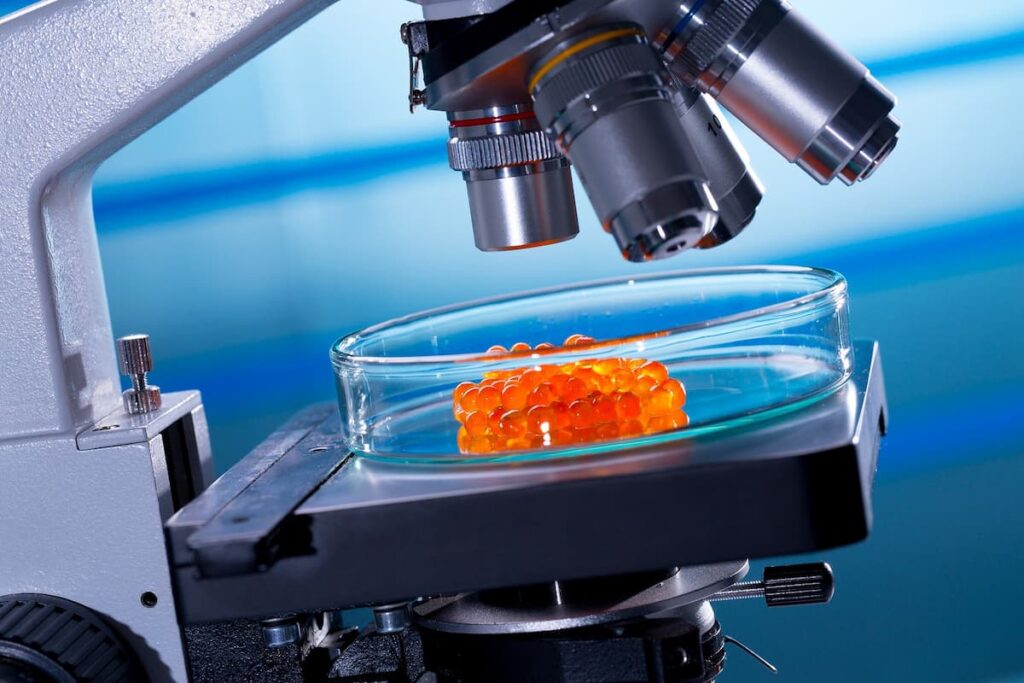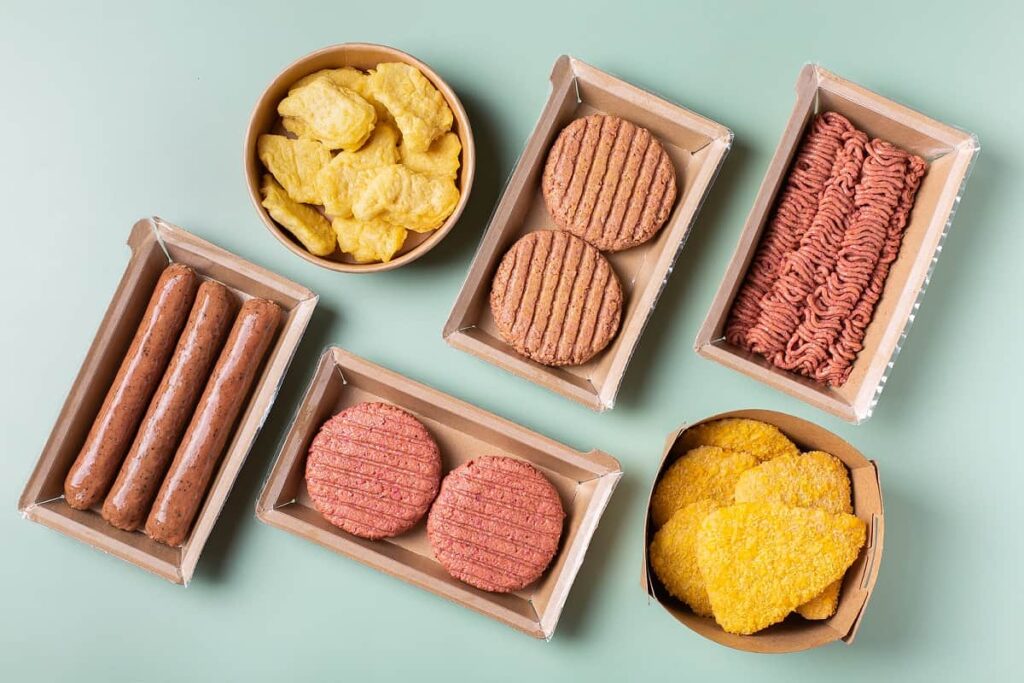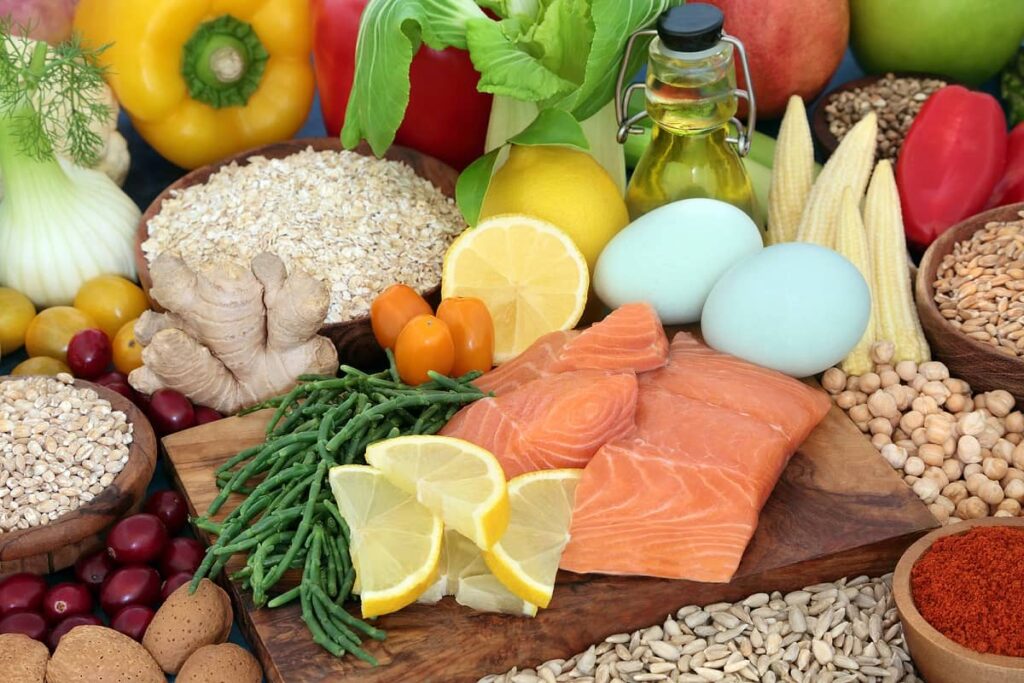9 Alternative Seafood Companies Saving the Oceans
Table of contents

We recently wrote about how plastic is choking our oceans and the different green packaging technologies being developed to wean us away from petroleum-based products. While we hope we can turn the tide, there’s already an estimated 5.25 trillion plastic particles currently circulating in the world’s oceans, and scientists are only now studying the potential health effects on humans. Yet seafood is big business, with global production hitting about 171 million tons in 2016 and valued at about $132.6 billion, according to the Food and Agriculture Organization of the United Nations. Aquaculture now accounts for about half of total production, and many of those farming operations are using advanced sensors and analytics to be more efficient and eco-friendly. Meanwhile, a number of companies are developing alternative seafood products to further relieve some of the pressure on Nemo and friends.
Disruption of the Seafood Industry
In a way, the seafood industry is facing many of the same challenges as the dairy industry, which is being disrupted by a cohort of startups that are milking concerns about climate change, animal welfare, and human health into a multi-billion-dollar business. We’ve already touched on the anxiety over plastic pollution and human health, but changes in the environment are also increasingly problematic for the seafood industry on two fronts. The consequences of higher seawater temperatures and ocean acidification – water becomes more acidic by absorbing carbon dioxide from the atmosphere – are already being felt. For example, salmon are dying off in Alaska because the water is too hot, while scientists are already seeing the effects of higher seawater acidity on commodities like shell-building oysters.

On the flip side, fisheries also produce carbon emissions, which a recent study said are much higher than previously estimated, though still just a fraction of the total carbon footprint from food production. And let’s not forget about seafood fraud around endangered species that comprise some of your favorite sushi meals like eel and bluefin tuna.
Alternative Seafood Still in the Guppy Stage
So conditions seem to be in place to support alternative seafood, and we’re not talking about the frozen fish sticks you pick up at the grocery store. Here the picture is different from dairy in several ways. First, the market is nearly nonexistent at this point. The only real numbers we have come from a marketing analysis commissioned by the Plant Based Food Association, which pegged the U.S. plant-based meat industry at $670 million, jumping 24% in just one year, ending in June 2018. That’s most likely driven by the popularity of alt beef brands like Impossible Foods and Beyond Meat (BYND).

Second, while there are a few plant-based seafood startups making waves, a lot of the activity in the alt seafood space actually seems focused on what’s become known as cellular agriculture, though lab-grown meat probably gives you a better idea of what’s in play – bypassing feedlots and slaughterhouses for culturing animals’ cells and creating meat far from picturesque meadows. That’s quite different from alternative dairy, where a handful of still largely early-stage companies are recreating proteins from milk and eggs through a fermentation process similar to beer. The process uses genetically modified yeast, a widespread technology for making all sorts of alternative proteins.
Cell-based Alternative Seafood Startups
Cell-based seafood, in contrast, involves placing the fish cells into a nutrient mix where they grow into actual meat – but without the toxins and microplastics. Let’s dive right into the five alternative seafood startups using cellular agriculture (or, more accurately, cellular aquaculture) to concoct crustaceans and cod out of animals’ cells.


Finless Food will begin with Pacific bluefin tuna, one of the many species being overfished.
Update 03/08/2022: Finless Foods has raised $34 million in funding to ramp up its strategic growth period. This brings the company’s total funding to $37.5 million to date.

its diabolical plot its plan for turning us all into fish people commercializing alternative seafood from fish cells from the seashore (say that five times real quick). The company plans to introduce products into a test market in two to three years, and break ground on its first large-scale production facility in five years. This cellular alternative seafood factory will be able to churn out 18 million pounds of finished seafood products per year when at full scale.
That’s the future. Today the startup is focused on producing whole seafood medallions and fillets before testing products in the next two to three years. BlueNalu already has the marketing down, with a campaign called Eating Blue, a riff on the going green theme.
Update 01/20/2021: BlueNalu has raised $60 million in debt financing bringing the company’s total funding to $84.8 million to date.


The company claims this was the first time anyone has offered cell-based sushi on a menu. We think they’re probably right.
Update 10/09/2019: Wild Type has raised $12.5 million in Series A funding to accelerate production of its cultured salmon. This brings the company’s total funding to $16 million to date.

Update 09/30/2020: Shiok Meats has raised $12.6 million in Series A funding which will go towards constructing a pilot plant to make their shrimp which are expected to launch in 2022. This brings the company’s total funding to $20.4 million to date.

Plant-Based Alternative Seafood




Update 01/06/2021: New Wave Foods has raised $18 million in Series A funding to scale up production and expand sales and marketing. This brings the company’s total funding to $20.3 million to date.
Also founded in 2015, Ocean Hugger Foods is a New York startup of master chef James Corwell. The first item on the plant-based seafood menu is sushi tuna, Ahimi, made from tomatoes and a few other things the chef had sitting around the kitchen. The company is also working on Unami, an eggplant-based eel alternative, and Sakimi, a carrot-based salmon alternative.
Genetically Modified Salmon


Canadian scientists genetically engineered the Atlantic salmon using a growth hormone from chinook salmon and what’s called a gene promoter from an ocean pout, which looks like an eel and has a sort of antifreeze protein in its blood that helps it survive in very cold waters. That combination leads to a higher concentration of growth hormone in the blood, causing the salmon to grow faster with about 25% less food and ready for market in half the time. The resulting frankenfish is about 99.99986% genetically identical to Atlantic salmon. Dig in.
Conclusion
While fish and crustaceans lack that certain charismatic fauna look that makes many of us pause to eat beef or pork, there are plenty of other reasons to avoid seafood these days. That’s opened the floodgates to a new wave of alternative seafood companies, though the industry is still learning to swim. That’s particularly the case with cellular aquaculture, where the efforts are pretty small scale. So while there’s quite a lot of activity on that front, we’d expect plant-based alternative seafood to rise to the top of the category pretty quickly, given the success of its beef alt counterparts like Impossible Foods and Beyond Burger.
Sign up to our newsletter to get more of our great research delivered straight to your inbox!
Nanalyze Weekly includes useful insights written by our team of underpaid MBAs, research on new disruptive technology stocks flying under the radar, and summaries of our recent research. Always 100% free.
















AquAdvantage is genetically modified salmon, that can grow to market size in half the time of conventional salmon with 25% less feed used compared to current farming methods. In 2020, the company produced its first harvest. The company currently has two active farms and they are expanding to a third farm. Third farm will finally push AquaBounty into profitability, CEO says…
AquaBounty has market cap $283M and they have $204M in cash.
ARK has a position in AquaBounty – that provides some validation.
One of the main risks is how customers are going to respond to GE salmon. I think it will be a positive response, but it may take some time.
Seriously? The company that pulled in $227,390 last quarter is talking about profitability? How about they start by showing us some meaningful revenues. Sell some salmon. Which brings up an interesting point. Why is this company building salmon farms instead of simply selling their new strain of salmon to professional salmon farmers and taking a high-margin royalty? It smells a whole lot Intrexon’s pivot from synbio to selling apple slices. And that’s fitting considering AquaBounty was borne from Intrexon.
AquaBounty started selling salmon this year from its Indiana farm (no 2). Indiana farm will have the capacity to produce 1200 tons per year, but currently is producing 450 tons per year.
The game changer is farm no 3 being constructed in Ohio – that will be the first large scale farm. The construction will cost $200M and the company already has enough money for it. That farm should be constructed by end of 2022 and it will have capacity 10,000 tons per year.
We’ll look forward to seeing those revenues pouring in then. Once they’ve done more than $2.5 million in a single quarter – about 10X what they’re doing now, then maybe we’ll take another look.